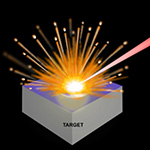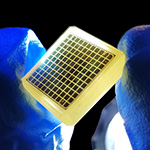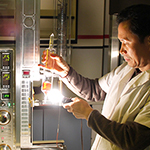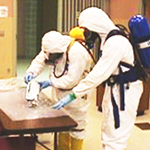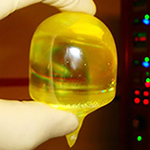November 1, 2019
Brimrose AOTF Spectrometer Again Selected for 2nd Moon Mission
The Brimrose AOTF spectrometer will be one of the instruments integrated into and carried on the VIPER (Volatiles Investigating Polar Expedition Rover), which is pictured here. Thanks to a TRIDENT drill that also is included, the Brimrose spectrometer will be able to identify H2O bands existing below the Moon's surface. VIPER will be able to collect about 100 days' worth of data. Artwork courtesy NASA Ames.
Sparks, MD—A Brimrose AOTF spectrometer will once again support an upcoming lunar landing. This one will be included as part of NASA’s Volatiles Investigating Polar Exploration Rover, or VIPER.
The second Brimrose spectrometer will also be deployed as part of NASA’s NIRVSS program, which stands for the Near Infrared Volatiles Spectrometer System. For this deployment, NIRVSS will be integrated into a golf cart-sized Moon rover, which will have a range of several miles on the surface of the Moon, allowing the spectrometer to map multiple geologic terrains in the search for water. VIPER will include a drill that will bring samples at depth up to the surface, which will let the spectrometer search to subsurface depths of 1 meter. The unit is planned to collect up to 100 days’ worth of data.
Earlier this year, NASA announced it would fly the first Brimrose spectrometer on a future commercial Moon delivery as part of NIRVSS, The spectrometer will be used to study the Moon’s surface at a fixed point. Both Brimrose spectrometers span the 1300-4000 nm spectral range, a range that provides for the identification of H2O bands. NIRVSS is managed from NASA’s Ames Research Center in California.
During this second mission, a Neutron Spectrometer System (NSS) will be used to locate “wet zones,” which Viper will then explore more in depth using the Brimrose spectrometer and other instrumentation.
Brimrose’s inherent ruggedized design includes solid state technology and no moving parts. Each spectrometer must successfully complete environmental qualification testing, including random vibration tests that simulate the launch environment, and in thermal-vacuum testing at NASA’s Ames Research Center, during which the instrument operates in lunar-like conditions.
Brimrose’s core Acousto-Optic Tunable Filter (AOTF) technology is being used in the spectrometer. Using AOTF, an RF signal is applied to a TeO2 crystal, producing acoustic waves within the crystal. There are a variety of advantages to this technology, including the fact that its passband wavelength can be tuned without the need for moving parts. TeO2 also is a very efficient optical material, and AOTFs have an extremely high optical throughput compared to other dispersive optics. The instrument can use the Sun or an included infrared lamp as its light source.




